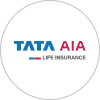Maximise your tax savings on a salary above ₹30 lakh by leveraging Section 80C, 80D, and 80E deductions. From tax-saving investments to health insurance premiums, here’s how you can keep more of your income.
Tax planning is essential for high-income earners, especially those in the ₹30 lakh salary bracket, as higher tax rates can significantly impact take-home pay. With smart tax planning and financial management, you can save a substantial amount while fulfilling your tax obligations. If your salary is around or above ₹30 lakh, this guide will explore the best strategies to save tax and optimise your earnings.
Key takeaway to save tax on salary above 30 Lakh
- Choosing the new tax regime is a good idea if you do not have many tax* deduction to claim. If you have significant tax-saving Tax deduction, opt for the old regime.
- Salaried employees could claim benefits like HRA, LTA, conveyance allowance, daily allowances, medical reimbursement, and *Tax deduction under Section 80C under the old regime.
- New tax regime provides an increased standard deduction of Rs.75,000 (up from Rs.50,000). You can deduct the interest on a loan that was used to purchase or construct a house for renting.
- If you invest in NPSs, you can claim additional tax deduction under Sections 80CCD(1B) and 80CCD(2). Under this section, employer contributions are also deductible.
Income Tax deduction for Salary Above 30 Lakhs
Income tax slabs are announced every year by the finance minister of India. While announcing the Union Budget on February 1st, 2023, Nirmala Sitharaman introduced a new tax regime, revising the old one.
As a result, taxpayers now have two choices regarding the tax regime. It means you can either choose the old tax regime or declare your taxes with respect to the new tax regime.
New Tax Regime (FY 2025–26)
Income Slab (₹) |
Tax Rate |
Up to 2,50,000 |
Nil |
2,50,001 – 5,00,000 |
5% |
5,00,001 – 10,00,000 |
20% |
10,00,001 – 15,00,000 |
25% |
15,00,001 – 30,00,000 |
30% |
Above 30,00,000 |
30% |
Old Tax Regime (FY 2025–26)
Income Slab (₹) |
Tax Rate |
Up to 2,50,000 |
Nil |
2,50,001 – 5,00,000 |
5% |
5,00,001 – 10,00,000 |
20% |
10,00,001 – 15,00,000 |
30% |
15,00,001 – 30,00,000 |
30% |
Above 30,00,000 |
30% |
Ways to Save Tax on 30 Lakh Salary
If you earn more than 30 lakhs per annum, you can save tax on 30 lakh salary in the following ways:
1. Invest in tax-Saving instruments (Section 80C)
- One of the most effective ways to save tax on the 30 lakh tax slab is by making investments under Section 80C in instruments like PPF (Public Provident Fund), ELSS (Equity Linked Savings Scheme), NSC (National Savings Certificate), etc
- Besides helping you save taxes, these investments can also offer decent returns if you stay invested for the long term.
2. Use health insurance policy premium (Section 80D)
- Section 80D of the Income Tax Act offers *Tax deduction on health insurance payments.
- Any individual can claim up to ₹25,000 on health insurance premiums paid for themselves, their spouse, and their children.
- Moreover, if you are paying for health insurance policies for your parents or dependent senior citizens, then you can claim an amount of up to ₹50,000. This can help you save a significant amount on healthcare expenses.
3. Donate to a charity (Section 80G)
- Another way to save tax on a high salary is to donate to a charitable organisation or fund.
- In this way, you can save up to 50% and even 100% of the eligible donated value.
4. Consider home loan premium Tax deduction (Section 24b)
- Under Section 24b of the Income Tax Act, you can claim Tax deduction on your home loan payments. This is another way to save tax on 30 lakh salary.
- If you have a home loan, you can claim up to ₹1.5 lakh on the principal amount (Section 80c) and up to ₹2 lakh on the interest amount (section 24b).
5. Invest in the NPS (Section 80CCD)
- The National Pension Scheme (NPS) allows you to claim an additional income *tax deduction.
- Section 80C allows a deduction of up to Rs. 1.5 lakh over and above this limit.
6. Claim HRA exemptions (Section 10) (13A)
- As per Section 10(13A), you can claim HRA if you live in rented accommodation.
- In order to qualify for this *deduction, you must:
- You pay rent
- Your salary structure includes HRA component
7. Consult a Tax Expert
- If you need assistance from experts or have limited time, then consider hiring an experienced income tax professional.
- A tax expert will help optimise your tax planning in the best way and may help you save a reasonable amount.
8. Claim Tax deduction for medical costs
- Section 80D allows *Tax deduction for health insurance premiums. You can claim up to Rs. 25,000 for insurance of yourself, your spouse, and children, and up to Rs. 50,000 for the insurance of senior citizen parents.
- Section 80DD provides *Tax deduction for expenses incurred on the medical treatment of a dependant with a disability. The deduction is up to Rs. 75,000, and in case of severe disability, with a maximum limit of Rs. 1.25 lakh.
- Section 80DDB allows *Tax deduction for medical treatment of specified diseases. Individuals below 60 years can claim up to Rs. 40,000, while senior citizens can claim up to Rs. 1 lakh.
9. Avail an education loan
- Under Section 80E of the Income Tax Act, individuals can claim *Tax deduction for the interest paid on education loans taken for higher studies.
- This *deduction applies to loans taken for oneself, a spouse, children, or a student for whom the individual is a legal guardian.
- There is no upper limit on the amount that can be claimed. However, the *deduction is available for up to eight consecutive years or until the interest is fully repaid, whichever is earlier.
10. Take a home loan
- For home loans, different sections provide *Tax deduction on both principal and interest payments.
- Under Section 80C, the principal repayment of up to Rs. 1.5 lakh annually is deductible. Additionally, under Section 24(b), you can claim a *deduction of up to Rs. 2 lakhs on the interest paid on a home loan.
- First-time homebuyers can also benefit from an additional *deduction of Rs. 50,000 under Section 80EE.
11. Leave travel allowance
- Leave Travel Allowance covers travel expenses for an employee and their family within India.
- Under tax laws, exemptions are available for the actual travel costs incurred.
- This benefit can be claimed for two journeys in a block of four years and includes travel by air, rail, or other public transport.
- It is important to maintain proper documentation, such as tickets and boarding passes, to claim the exemption.
12. Invest for LTCG *tax deduction
- Currently, long-term capital gains (LTCG) from equity investments exceeding Rs. 1 lakh are taxed at 10%, without indexation benefits. LTCG from property or debt instruments held for over three years are taxed at 20%, with indexation benefits.
- To *defer or exempt LTCG tax, you can either invest in specified bonds under Section 54EC or reinvest the gains in residential property under Sections 54 and 54F.
13. Invest in ELSS mutual funds
- *Tax deduction is available under Section 80C of the Income Tax Act for investments up to Rs. 1.5 lakh in ELSS.
- The lock-in period for ELSS is three years which is the shortest among the various tax-saving investment options available under Section 80C.
- ELSS mutual fund schemes invest primarily in equities and offer higher returns than other Section 80C investments.
Which regime is better for 30 lakh LPA to save tax?
In order to decide which tax regime is better for 30 lakh LPA, you need to carefully calculate your tax liability under both the old and new tax regimes.
Sr no |
Particulars |
Total taxable income - Old regime (in rupees) |
Total taxable income - New regime (in rupees) |
1 |
Income under the head salary |
30,00,000 |
30,00,000 |
2 |
Less-Standard *Tax deduction u/s 16 (ia) |
50,000 |
50,000 |
3 |
Net Income under the head salary (a-b) |
29,50,000 |
29,50,000 |
4 |
Income under the head house property |
- |
- |
5 |
Less: Deduction u/s 24 |
- |
- |
6 |
Net income under the head house property (d-e) |
- |
- |
7 |
Gross total income (c+f) |
29,50,000 |
29,50,000
|
8 |
Less: Deduction u/s 80C |
1,50,000 |
-
|
9 |
Less: deduction u/s 80D |
25,000 |
- |
10 |
Total Income (g-h-i) |
27,75,000 |
29,50,000 |
11 |
Less: Basic exemption |
2,50,000 |
3,00,000 |
12 |
Taxable income (j-k) |
25,25,000 |
26,50,000 |
13 |
Tax on taxable income |
6,45,000 |
5,85,000 |
14 |
Health and education cess |
25,800 |
23,400 |
15 |
Tax payable (m+n) |
6,70,800 |
6,08,400 |
From the above comparison, you can see that the new regime can be more advantageous for you, as it would result in an additional tax savings of Rs. 62,400.
Conclusion
To avoid the financial burden and better financial management, you can consider several ways in which you can save tax on 30 lakhs salary. From purchasing health insurance policies and investing in tax-saving instruments to claiming HRA exemptions*, there are various ways to reduce your tax liability. To choose the right tax regime, consider calculating your tax liabilities under both regimes to determine the suitable one for you. Moreover, you can also hire a tax professional for better assistance while claiming tax benefits.







 FOR EXISTING POLICY
FOR EXISTING POLICY 
 FOR NEW POLICY
FOR NEW POLICY 




